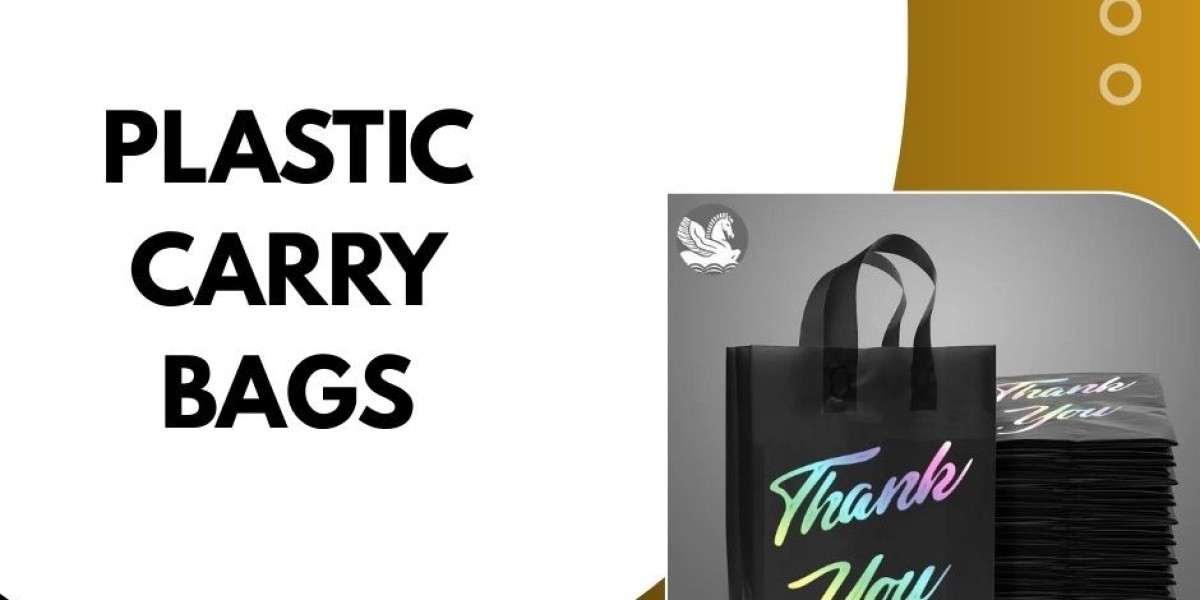The new international trade scenario with the fast movement of goods and materials would be unthinkable without simple but highly sophisticated products that ultimately allow the continuity of the flow of the market. The polypropylene (PP) woven fabric is one of the least visible but most important of these basic materials. Essentially made by weaving plastic strips of polypropylene into a strong, durable, and lightweight sheet, the family of this multipurpose material and its derivatives is now present in practically all industrial and commercial sectors. Its excellent combination of being strong enough for its weight/volume, water resistant, and cheap makes it the silent workhorse that supports the agricultural, construction, and global logistics sectors.
Justification of resilience: PP woven fabric in agriculture
The needs of agriculture to both protect the fragile fruit, care for the soil and manage bulk goods like seeds, grains, and fertilizers, have pushed the acceptance of PP woven fabric to the limits. The product features are a perfect fit for the problems of outdoor exposure and long-term storage of agriculture.
Packaging and preservation of produce
the PP woven bags are the most popular form of application, as they provide the packaging function of the most used products in the agricultural sector, which are in bulk, in the best way. At the same time, woven sacks offer excellent tear resistance and, if laminated, superb water protection in contrast to traditional jute or paper sacks. This robustness is very important in the protection of goods not only in storage but also during different stages of transportation or when the goods are exposed to various weather conditions. For farmers, the benefit that comes with it is in the form of less decay and product loss, which means they will have higher security for their crops. Moreover, the flexibility of these bags in terms of construction, eg the option to have the bag ventilated, provides bags that can be loaded with anything from very small seeds to granular fertilizers just like
Soil Management and Crop Protection
However, the fabric can be the main material of the groundcover, that is, the landscape fabric. These sheets are primarily designed to be put over soil to completely wipe out the growth of weeds around, be a temperature regulator, and save water. The fabric is capable of blocking the sun's rays and thus the use of friendly herbicide is possible, which is great for the environment and it promotes the concept of sustainable farming. There is a product made with UV stabilizers to overcome the problem of continuous exposure to the sun and this product: shade has a net and a cover for crops. The net is used to diffuse the rays of the sun and to protect the valuable crops from pests and harsh weather; thus, the fabric basically ensures the creation and maintenance of healthy plant habitats. Besides that, the strength and the possibility of reuse of these agricultural textiles provide farmers with a cheap and permanent solution for managing their crops.
Building Stronger: Uses in the Construction Industry
The requirements of construction materials are that they should resist heavy loading, abrasive contact, and harsh environment exposure. PP woven fabric not only fulfills these necessities but does so with amazing strength to the light-weight ratio thereby, it can be used in various building and infrastructure projects.
Packaging Heavy Building Materials
The most apparent use of the material is for packaging heavy granular building materials. Generally, PP woven bags are used. These bags in valve-bag form, as the industry standard, are the most common for cement, sand, gravel, and plaster. Such woven sacks ensure no matter leakage, do not allow punctures originating from sharp aggregates, and have the strength even for rough handling on a construction site that is usually full of activities. Also, the material, particularly in the case of the laminated ones, which is very resistant to moisture, acts as an agent to maintain the purity of the products that can absorb water such as cement and avoid giving out water for a long time. Suppliers like Singhal Industries Pvt Ltd who are known for the kind of goods they supply, mostly focus on manufacturing top-grade packaging solutions that cater to the hard needs of construction materials.
Structural Reinforcement with Geotextiles
Geotextiles are more fundamental and structural applications. One such example is road construction, where these woven PP geotextiles are used extensively in the building and maintenance of highways, roads, and bridges. The fabric placed between the soil and the rock works here as a separator, filter, reinforcement, and stabilizer. As an illustration, if this were a road construction project, geotextile would stop the subgrade from mixing with the road base material, and this would keep the structure strong and the pavement lifespan long. For example, the high tensile strength of the woven fabric can support the soil mass on retaining walls and slopes, thus, the advent of the problem of slide or erosion is ruled out. Besides this, the fabric is also found in heavy-duty tarpaulins and scaffolding covers, which are essentially the two products that provide weather protection over building sites and safety barriers for the workers, respectively.
The Backbone of Global Trade: PP Woven Fabric in Logistics and Packaging
PP woven fabric is probably the single most significant consumer in logistics and bulk packaging. First, the properties of the material such as its lightness, durability, and low cost make it the best option for moving the products efficiently all around the globe.
Efficiency in Bulk Transport
Singhal Industries Ltd. recommend their core product to customers who are looking for a packaging solution that can strike a good balance between material economy and high performance which is none other than the PP woven bag. Due to its lightness, it minimizes the amount of the carrier container that is empty thus, transportation is less expensive—a very important factor in the transport of commodities in large quantities. On the other hand, the woven structure of the bag provides excellent resistance to tearing and stress and thus product quality is kept intact even in the most complicated supply chains. This makes woven sacks such as the ones from Singhal Industries Pvt Ltd as well as similar products from other suppliers a global standard.
Advanced Branding and Protection
One of the inventions of this material is advanced packaging like Bopp woven bags. BOPP (Biaxially Oriented Polypropylene) bags are basically BOPP films laminated PP woven sacks. This film is suitable for high-definition, reverse printing, which, in terms of visuals, is an attractive, high-end, premium packaging that at the same time still has the strength of the woven backing but has a shiny, retail-ready finish. Such types of bags are generally used for products with added value, for example, pet food, the best-quality seeds, and branded chemicals can be one of the beneficiaries of the excellent marketing that goes hand in hand with high-quality moisture and contamination barriers.
Customization and Global Standards
A company such as Singhal Industries Pvt Ltd which manufactures these sturdy woven sacs would rather focus on the creation of strong but customizable solutions that not only meet but exceed the international packaging standards. They can tailor make sacks for the purpose of being UV-stabilized, anti-slip coated, or having a specific liner, thus, the packaging will be the exact match for the content and shipping route, from fine powders to abrasive minerals. And that is the main reason why PP woven fabrics are still the first material choice when it comes to massive worldwide trading.
Conclusion
Polypropylene woven fabric is one of the main materials in the industrial world and it comes in different forms such as basic PP woven bags, robust Woven sacks Singhal Industries Pvt Ltd, and aesthetically advanced bopp woven bags. Its nature, low price, and superior physical qualities have made it an absolute solution in agriculture, where it is the protector and the manager of crops; construction, where it is the backbone and the container of the materials; and logistics, where it is the durable, lightweight vessel for global bulk transport. As the need for sustainable and efficient material solutions grows in industries, the omnipresent and versatile PP woven fabric will continue to be a major player in industrial progress.
Frequently Asked Questions
Q: What is the main difference between a standard PP woven bag and a bopp woven bag?
A: As a base, a standard PP woven bag is woven polypropylene tapes and is very sturdy and it lifters can be put into it easily. A bopp woven bag goes one step farther and laminates this construction with a Biaxially Oriented Polypropylene film, which results in high-quality, colorful, photographic printing and better barrier to moisture.
Q: Are PP woven bags recyclable?
A: Right, polypropylene- based PP woven bags are mostly made of a kind of recyclable polymer called thermoplastic. If they are also reusable, they have a longer lifecycles, which means that less waste will be produced during the usage of these materials and their disposal in landfills compared to those that are single-use.
Q: Why is PP woven fabric used extensively in civil engineering?
A: Polypropylene (PP) woven fabric is mainly used as geotextiles in civil engineering because of its properties like high tensile strength and the ability to separate, filter, reinforce and stabilize soil layers which is commonly observed in road construction, retaining walls, and embankments etc.
Q: What are the primary agricultural applications of PP woven fabric apart from packaging?
A: PP woven fabric is used to make ground covers or mulch sheets that are designed to suppress weeds and conserve moisture. One more area of application is the usage of UV-stabilized nets that are used for crop protection and shading against harsh sunlight.
Q: How does the use of PP woven bags reduce costs in logistics?
A: PP woven bags substantially cut logistics costs as they are extremely sturdy and light in weight. Thus shipping costs (which are based on weight) are reduced considerably and at the same time, product loss due to tearing or breakage during rough handling is minimized.
Q: Are all PP woven bags waterproof?
A: No, generally, standard PP woven bags are breathable, which is good for products that need ventilation. To make a fabric waterproof, it must be done by laminating or coating it with a material such as polyethylene (PE) or the BOPP film that was mentioned earlier.
Q: Who is the largest supplier of PP woven bag?
A: There is no single largest supplier of PP woven bags as it is a global market with huge competition and a lot of companies. The biggest part of the market is influenced by large-scale suppliers that are mostly from Asia, especially from countries like China, Vietnam, and India. Besides, for example, companies like Singhal Industries Pvt Ltd are among the major suppliers of this industry providing domestic and international markets with a wide variety of special woven packaging solutions.
Q: Who is the largest exporter of PP woven bag?
A: Usually, the largest exporters of PP woven bags and sacks are countries with immense manufacturing capabilities, for instance, Vietnam, China, and India. Taking the lead of qualitative and high-volume production, a company like Singhal Industries Pvt Ltd has been instrumental in putting India in the position of a prominent global exporter of PP woven products.
Q: Who is the largest manufacturer of PP woven bag ?
A: It is difficult to say which the very largest manufacturer is because the market is very global and decentralized. To the contrary, large-scale factories are mostly located in Asian countries. Companies like Singhal Industries Pvt Ltd have large, highly modernized factories to produce a high quantity of PP woven bags, thus making them the foremost manufacturers in the region.







